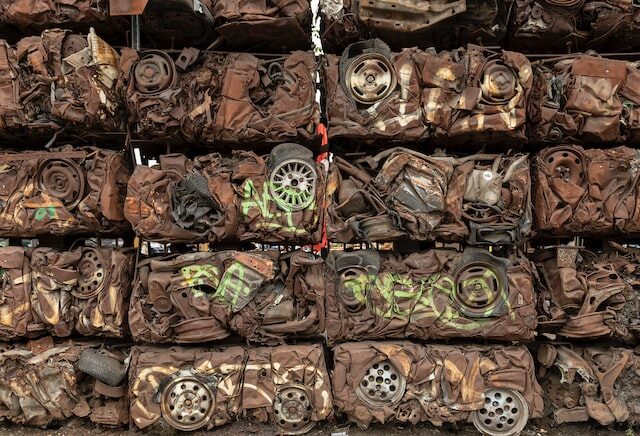If you are looking for an excellent guide to help you understand the different types of industrial scrap metals, then you are in the right place. This article has several other topics that you will want to be familiar with, including brass, non-ferrous metals, and the magnetic response of each. By the time you finish reading this article, you will have a much better understanding of which types of metals are worth buying and which ones are best to avoid.
Brass
Identifying different types of industrial scrap metal can be complicated. However, with proper guidance, separating and recycling the material should be more accessible.
The simplest way to identify a piece of metal is by its color. Depending on the alloy used, the hue of the material can be a good indicator of its composition. Color is also essential to distinguish alloys from each other.
In addition to recognizing the color, a little knowledge of the metal’s chemical composition will help you make an accurate identification. There are several techniques to do this. These include a simple magnet test, a color spot test, and a chemical test.
A ferrous metal attracts a magnet, making a great starter. Non-ferrous metals do not attract interest, and they do not contain iron. Copper, gold, aluminum, and stainless steel are non-magnetic metals.
Non-ferrous metals
Industrial scrap metal contains a variety of metals. This industrial scrap metal Waynesville can be ferrous or non-ferrous. Metals in these two categories have distinct properties, which affect how they are used.
Ferrous metals are stronger and more durable than non-ferrous metals. They are usually alloyed with other metals to improve their corrosion resistance. Some common examples of ferrous metals are carbon steel, wrought iron, and cast iron.
Non-ferrous metals, on the other hand, are more malleable, light, and resistant to rust. Non-ferrous metals can be forged and welded, making them ideal for use in buildings and construction. However, they are also more expensive. The price for non-ferrous metals can vary based on the type of metal you want.
Many different non-ferrous materials are available, such as copper, aluminum, tin, and zinc. These are commonly used in building, electrical, and plumbing systems. But some non-ferrous metals are rare and difficult to find.
Oxidation
The chemical composition of industrial scrap metal can be determined by oxidation. Oxidation occurs when an ionic chemical reaction occurs on the metal’s surface. In this process, iron molecules turn into iron oxides.
Steel is a type of metal that is corrupted by the action of oxygen in the air. It has a characteristic red rust.
Brass is a metal that contains copper and zinc. In the early stages of oxidation, the copper acts as a protective layer. However, the oxidation process continues.
After 30 minutes of oxidation, the sample had a stable oxidation regime. This is attributed to the Kirkendall effect. At this stage, the copper content of the non-oxidized metallic phase increased.
In the presence of iron, the oxidation rate of copper decreased. This is due to the lower affinity of copper for oxygen.
During the early stages of oxidation, the liquefied copper acts as a protective layer, which prevents the oxidation process from affecting the substrate. However, the oxygen in the air diffuses quickly to the new surface of the metal.
Magnetic Response
When identifying industrial scrap, it is essential to know the composition of the metal. This helps in deciding on the proper use of the material. Understanding the design will allow the recycler to save energy, protect domestic resources, and reduce import dependence.
Metal scrap is classified into ferrous and non-ferrous materials. Ferrous materials contain iron. Non-ferrous materials are composed of brass or aluminum. Both are attracted to magnets but do not share the same physical characteristics.
Industrial scrap is usually generated within the manufacturing process. It is then sorted into lots of similar materials. Some of the methods used in identification include chemical spot tests and object recognition.
Another method involves X-ray fluorescence analysis. Fluorescent X-rays are used to determine the properties of metals. The test results are compared to the standard article to establish its composition. Several commercial instruments are available for this purpose. These include fluorescent X-ray spectrographic analyzers, portable optical emission devices and thermoelectric sorters.

